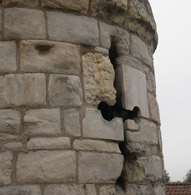Planning permission restrictions for properties of cultural heritage, referring to sites of historic, artistic, or scientific value as opposed to natural heritage sites, requires a shrewd approach to security. Cultural heritage can range from monuments, memorials, architectural works, sculpture, painting, or archaeology. It also includes groups of buildings and sites.
As any significant alterations or obvious changes to a heritage property immediately devalues it, heritage crime can be challenging to defend against. The importance of preserving heritage properties is undeniable yet the very nature of these preservative regulations means even semi-standard solutions can be very challenging.
It is imperative that you are aware of regulation, laws and controls that are in place and affect any work that affects your property. Any changes made to listed properties, including security measures, may require consent to be given. You can find out more here at the English Heritage website.
Also, keep in mind that insurance for heritage properties is another important consideration. Insurance brokers will provide advice that if not followed could result in extremely expensive premiums should an incident occur, which is why a holistic approach to securing heritage property is good practice. Some insurers will also favour some physical security measures over others. In rare cases, insurers will withdraw cover if they do not agree with the measure implemented – even details as minute as the wording on signage will be focused on!
Understanding potential threats
As there is no one solution for securing heritage sites, categorising requirements by threat is the most efficient way to mitigate risk. Understanding and predicting every risk a property will encounter is vital for complete integration. In most applications, early involvement with the project during the build stage will benefit the overall standard of reinforcement (for example reinforced lintel support). Heritage crime involves all efforts to damage heritage property. The most common methods of crime on heritage include:
•Theft of contents or statues and other valuable materials from the property
•Vandalism
•Assault: physical harm towards guards, visitors, and other parties involved such as transportation personnel.
•Fire setting, graffiti, or similar activities.
•Premeditated attacks and sabotage of the property or its contents.
Criminal activity can also have an impact on other businesses and individuals. For example, causing temporary closure of a tourist attraction can also cause a loss of income to nearby businesses.
Physical security
An important element of property security is the deterrence of forced entry through obvious physical measures. Due to the significance of preserving heritage properties, any measures integrated into the fabric of a building must be concealed within the existing features. Security measures need to be unobtrusive. This is mainly in accordance with listed property notations. Ultimately posing a problem for deterring opportunists attack, alternations to heritage sites must involve only the most minimal amount of work possible.
Physical security can be applied through different systems such as:
•Fences
•Security shutters
•Gates
•Doors
•Locks
•Safes
•Intruder alarms
•CCTV surveillance
•Electronic access control systems
•Lighting; and
•Operational measures; human activity in support of security.
Integrated and layered security should be considered as an appropriate approach for heritage properties. Search for methods of spreading security across the premises, beginning with the perimeter, all the way through to the areas holding valuable assets. Each layer may be used in combination with electronic detection systems. This means that, after overcoming one layer, detection methods can prompt for a response to arrive while the next layer delays the criminal.










